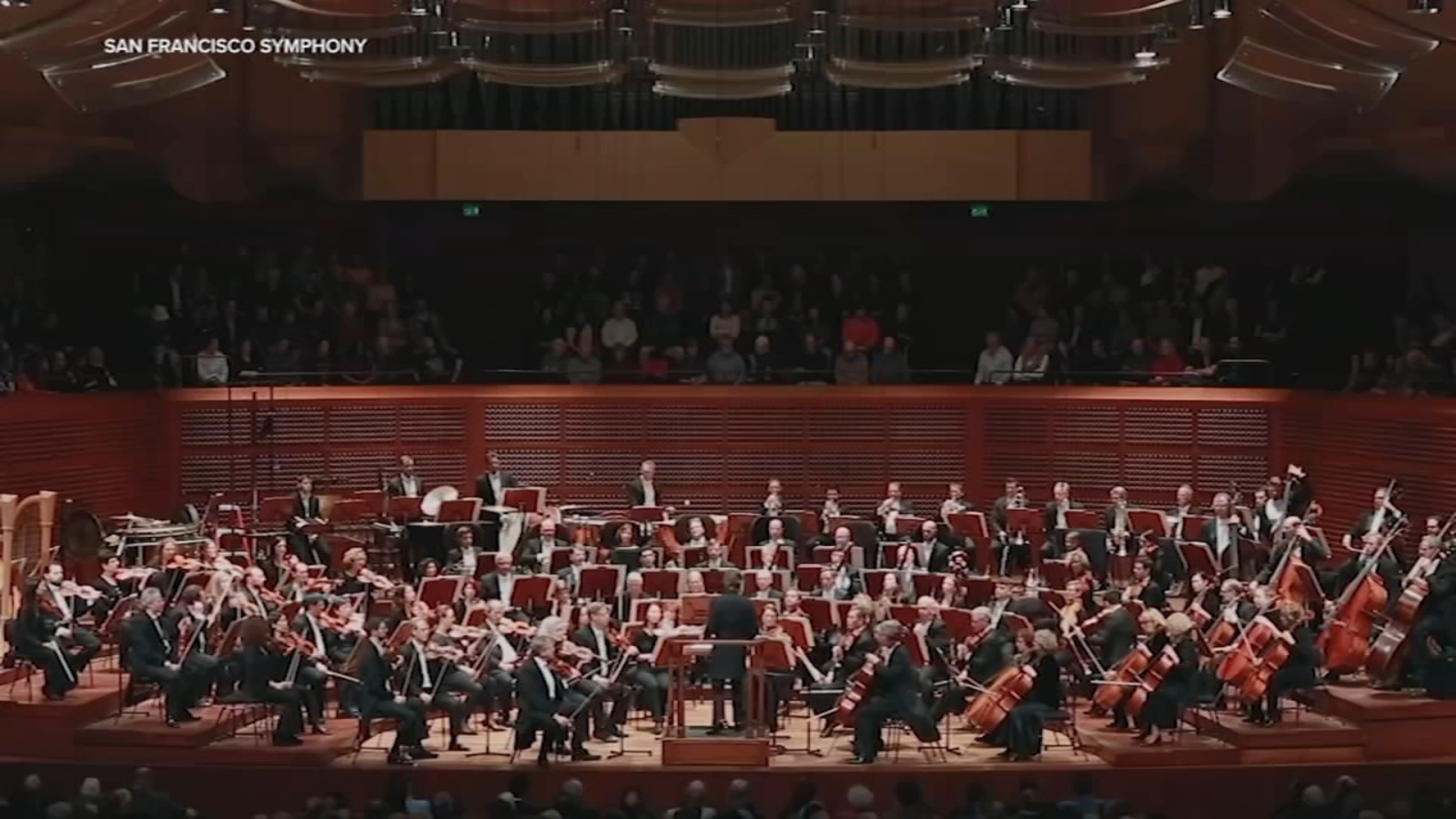
Iconic San Francisco Symphony facing one of its most challenging moments since its inception in 1911: Here’s why
SAN FRANCISCO (KGO) — Even if you aren’t a fan of classical music, you should know that the San Francisco Symphony is among the top five orchestras in the country. It’s taken decades to reach that stature. But now, the symphony faces one of its most challenging moments since its inception in 1911: how to keep its prestigious title while supposedly struggling financially.
One might say San Francisco had a fairy tale moment in late 2018 when the symphony hired conductor Esa-Pekka Salonen.
“To have hired him was a public relations coup, an artistic coup beyond imaging. None of us here thought that could ever happen,” expressed Joshua Kosman, the former Classical Music Critic for the San Francisco Chronicle.
Salonen didn’t actually begin his tenure until 2020 and we all know what that infamous year meant for the world, COVID-19.
All concerts were canceled through June 2021.
By then, the two top people directly responsible for hiring Salonen had left. In their place, a new leadership was assembled, Matthew Spivey and Priscilla Geeslin.
By March of this year, Salonen announced he was stepping down.
Lyanne: You will perhaps be remembered as the folks who let, quote, “A bucket-list, brilliant conductor, go.” A simple question to both of you, what the hell happened?
Matthew Spivey, the symphony’s Chief Executive Officer: “You know I think this is a moment of change for every arts organization, certainly in San Francisco but really across the country. We are seeing as arts organizations emerge coming out of the pandemic they are thinking differently about who they are and how they connect and relate to the world around them.”
Salonen who has been connected to the world of tech and wanted to experiment with music and robotics.
He had been quoted before as saying that, “It’s not only about the orchestra of the future, it’s about the orchestra of the now.”
Ideas that, some say, proved to be costly.
MORE: San Francisco Symphony features all Asian composers for their annual Lunar New Year show
SF Symphony’s Year of the Rabbit concert features US modern Asian composers
That’s when management and the board, once again, brought up the discussion of financial responsibility despite having a large endowment.
“You sit around a table as a family and you say we have this much money, this is what we can spend this year. Do we take a vacation, do we not take a vacation, do we go out to dinner more, do we do less. It’s saying that this is the money we have to spend and this is how we’re going to utilize it to make sure that by the end of the year we still have a reasonable amount of money to move forward,” stated Priscilla Geeslin, the Board Chair of the symphony.
Critics argue “prestige” costs money.
“And if you’re not an organization that’s ready to spend money to create art, what are you doing?,” asked Kosman.
“There is no question in my mind that the San Francisco Symphony is one of the most extraordinary ensembles in the world, period. And I think what defines that is not budget size. Some of the most impactful moments that we’ve made don’t necessarily cost much at all,” insisted Spivey.
They both maintain there is no animosity between them and Salonen.
Salonen did not want to be interviewed for this story nor did he allow us to film any rehearsals or performances that include him.
MORE: Lunar New Year SF: Symphony features all Asian composers for Year of the Rabbit show
SF Symphony’s Lunar New Year 2023 show for the Year of the Rabbit promises a celebration for all with a program featuring US modern Asian composers
With its financial belt tightening, on Monday night members of the SF Symphony Chorus voted to authorize a strike. Meanwhile, contract negotiations with the musicians union are set to begin soon.
“If we lose the high quality of the musicians, we lose the high quality of the art, and so we have to ask ourselves what is important to us and I think any civilization has to answer that questions that beauty is incredibly important,” said Scott Pingel, the principal bass of the symphony.
“We are committed to working with our musicians and I trust them, I really do. Our challenge is not an internal one, our challenge is an external one,” added Spivey.
That external challenge is to attract a younger audience and finding new donor money.
“That’s part of the challenge, how do you shore up the rest of the support and the interest, and there is a turn over going on in the folks who support the arts at a high level because of age,” said Bill Lueth, the President of Classical KDFC, the radio station that broadcasts the symphony’s concerts.
The symphony believes one way to attract audiences is to showcase what few cities have, a one-of-a-kind performing arts scene, which also includes the ballet, the opera, the SF Jazz Center, and the Conservatory.
“This is an incredible concentration of great art institutions and west of the Mississippi you don’t have a concentration like this,” explained Geeslin.
Lyanne: What do you want viewers to get out of this interview?
Geeslin: “I want them to come to the hall, I want them to come and support us. I want them to come and enjoy the music and our orchestra and to celebrate the San Francisco symphony.”
In case you are wondering who will replace Salonen, a selection committee met last Friday to begin searching for another extraordinary conductor– leaving the rest of us to “read the tea leaves.”
Copyright © 2024 KGO-TV. All Rights Reserved.
